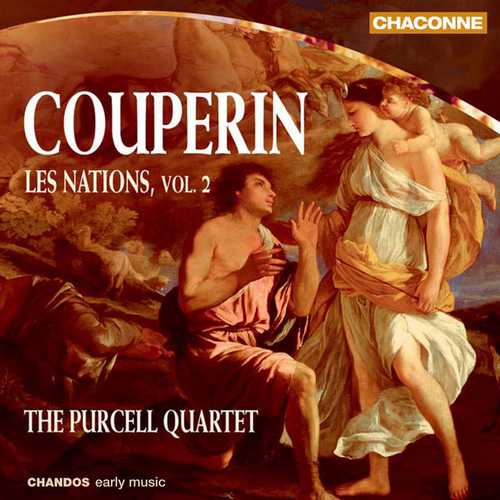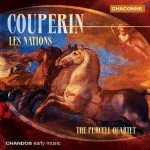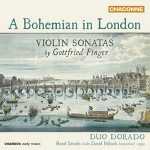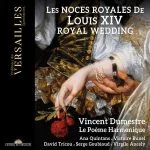

Composer: François Couperin
Performer: Purcell Quartet, Rebeka Rusó
Format: FLAC (tracks)
Label: Chandos
Catalogue: CHAN0729
Release: 2006
Size: 1.21 GB
Recovery: +3%
Scan: yes
L’art de toucher le clavecin
01. Prelude No. 2 in D minor
Les Nations
Troisième ordre ‘L’Impériale’
02. I. Gravement
03. II. Vivement
04. III. Gravement, et marque – Tres lentement
05. IV. Rondeau: Legerment
06. V. Rondement
07. VI. Vivement
08. VII. Allemande: Sans lenteur
09. VIII. Courante
10. IX. Courante II: Plus marquee
11. X. Sarabande: Tendrement
12. XI. Bouree: Gayement
13. XII. Gigue: D’une legerete moderee
14. XIII. Rondeau: Gayement – Premier Couplet – Rondeau – Second Couplet – Rondeau – Troiseme Couplet – Rondeau
15. XIV. Chaconne
16. XV. Menuet
Concert No. 13 (les Goûts réunis) in G major, à deux instrumens à l’unisson
17. I. Vivement
18. II. Air: Agreablement
19. III. Sarabande: Tendrement
20. IV. Chaconne: Legere
L’art de toucher le clavecin
21. Prelude No. 3 in G minor
Les nations
Quatrième ordre ‘La piémontoise’
22. I. Gravement
23. II. Vivement
24. III. Gravement
25. IV. Vivement, et marque – Lentement
26. V. Air: Gracieusement
27. VI. Air II
28. VII. Gravement et marque
29. VIII. Legerement
30. IX. Allemande: Noblement, et sans lenteur
31. X. Courante
32. XI. Courante II: Un peu plus gayement
33. XII. Sarabande: Tendrement
34. XIII. Rondeau: Gayement – Premier Couplet – Rondeau – Second Couplet – Rondeau – Troiseme Couplet – Rondeau
35. XIV. Gigue: Affectueusement, quoy que legrement
The chamber music of François Couperin comes to mind less readily than do his keyboard works, and the trio (and duo) sonatas heard here are less familiar than the set of Concerts royaux known as “Les goûts réunis” (The Tastes Reunited), composed a few years earlier and intended, as the subtitle suggested, to fuse the new tunefulness coming out of Italy with the formal, elegant dance suites of the French court.
The two ordres or suites from the collection Les Nations stylistically follow on those of the earlier sets, with numerous short movements (15 in one, 14 in the other) that bring an elegant, choreographic quality to the Italian tempo-titled movements and a profusion of violinistic melody to the French ones. The period-instrument Purcell Quartet (two violins, of strikingly different personalities, plus a continuo consisting of harpsichord and bass viol) conveys this music beautifully.
The players are aware of the substantial differences between Couperin’s keyboard output and his chamber music, and they avoid the intense, hothouse atmosphere that can work in the keyboard pieces, with their dense layers of ornament and programmatic suggestion. (Two keyboard preludes appear on this album, in the manner of curtain-raisers for each half of the program.) In the suites from Les Nations, the quartet is rather deliberate, emphasizing elegance and a languorous quality over ornament and edge. Another attractive feature of the program is the inclusion of the unique Concert à 2 instruments à l’unisson — Piece for two instruments in unison.
This work (from the earlier Concerts royaux set) seems to hark back to a long tradition of duos with a didactic purpose; it is filled, atypically for Couperin, with contrapuntal artifice. But that artifice is woven into music so lightweight it seems to float, especially in a performance as attuned to its paradoxical nature as the one here is. The notes by Richard Langham Smith provide a great concise introduction to these masterworks of the French Baroque, including a delightful long quotation from Couperin’s own written introduction to the Les Nations set, and the sound is close-up and clear without fetishizing performer noise.



